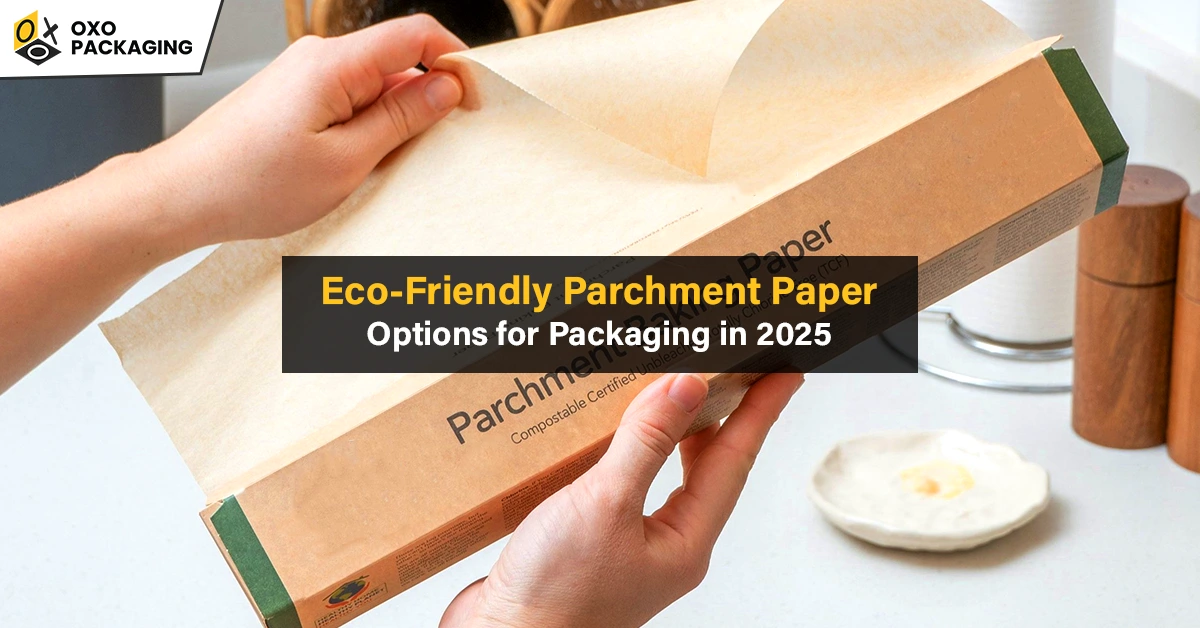Parchment paper is one of the essential items used for baking. It is generally coated with silicon to ensure heat resistance during baking. One of the pitfalls of regular parchment paper is its recyclability challenge. The silicon coating on parchment paper makes it difficult to recycle and compost.
Brands that use eco-friendly tools and packaging for manufacturing products tend to win more repeat customers. Industrial growth has created a surge in sustainable innovation. And one of the sustainable innovations is eco-friendly parchment paper.
If you are running a baking business and looking for eco-friendly parchment paper options, you must read this blog to decide what suits you best!
Overview of Parchment Paper
Parchment paper is used for baking food. It helps add perfection to your baked goods because of its heat resistance and non-stick properties. Regular parchment paper is coated with a layer of silicon, which ensures the baked goods don’t come out burnt.
Parchment paper is food-safe because it is made from cellulose fibres and then coated with silicon. However, the presence of silicon on the parchment paper makes it difficult to compost or recycle. The coating of silicon makes it non-stick. It means you don’t need to grease the pan if using parchment paper.
As the industries evolve, they look for sustainable innovations for a greener future. One of the sustainable innovations is eco-friendly parchment paper options you must consider using in 2025.
Types of Eco-Friendly Parchment Paper
Generally, the base for regular parchment paper is made from cellulose fibres, which can be recycled easily. However, what makes parchment paper different from other types of paper is the silicon coating on it that makes it heat-resistant. Let’s delve into some eco-friendly alternatives to parchment paper that have the same traits a regular parchment paper:
-
Unbleached Parchment Paper
As the name suggests, unbleached or uncoated parchment paper does not contain a silicon layer. Unbleached parchment paper has a natural brown colour because it does not undergo the bleaching process.
The brown parchment paper is made from cellulose fibres, making it more eco-friendly. They are used for baking goods at moderate temperatures. It is made without the use of chemicals, ensuring its food-grade properties.
They can be composted in ideal conditions like moisture, humidity and temperature. Unbleached parchment paper has natural heat-resistant and non-stick properties. It can withstand temperatures up to 425°F (220°C).
-
Chlorine-Free Parchment Paper
Regular parchment paper goes through a process of bleaching and coating, which includes the use of Chlorine. It is made from natural resources to make it eco-friendly. Chlorine-free parchment paper is primarily made from cellulose fibres, often sourced from flax.
The absence of chlorine in the making of eco-friendly, chlorine-free parchment paper prevents all types of chemical reactions. Chlorine-free parchment paper retains its natural colour because it does not go through the bleaching process.
Some Chlorine-free parchment papers may include a glycerin treatment to prevent cracking during the drying process.
-
Plant-Based Parchment Paper
An excellent eco-friendly parchment paper option is plant-based parchment paper made from fast-growing plants. Most popular plant choices for making such eco-friendly parchment paper are Bamboo and Hemp.
Their pulp and fibres are used for making the parchment paper, which also has heat-resistant properties. Bamboo and Hemp parchment paper is not only sustainable but also cost-effective because Bamboo and hemp require less water and land to cultivate compared to traditional paper sources.
-
Compostable Parchment Paper
As its name suggests, compostable parchment paper is made from natural materials that can compost or biodegrade naturally.
Plant-based starches, wood pulp and materials are used to create compostable parchment paper that also enriches the soil when used as compost in the soil.
It naturally has heat-resistant and non-stick properties, preventing your baked items from getting burnt during baking, even at high temperatures.
Final Thoughts
Industry experts are looking for sustainable alternatives for packaging and essential tools for manufacturing products. Eco-friendly parchment paper is one such alternative to regular parchment paper, which is not recyclable. It is extensively used for baking goods with perfection. The layer of silicon on regular parchment paper makes its recyclability challenging. However, unbleached, compostable, Chlorine-free, and Hemp and bamboo parchment paper are some excellent eco-friendly choices everyone should know in 2025!
Regular parchment paper is not compostable because it is coated with non-biodegradable silicone that makes it heat-resistant. The presence of a silicon coating on the standard parchment paper makes it difficult to decompose. However, some specialty parchment papers are compostable, which are usually unbleached and uncoated.
Recycling parchment paper is quite challenging because, in its regular form, it is coated with silicon. Uncoated parchment paper can be recycled.
Of course! You can get your branding details, including logo, printed on the eco parchment paper to increase brand awareness. Flexographic printing is a more effective technique to print an eco-friendly parchment paper.
Yes! Unbleached parchment paper is a sustainable option because it does not contain chlorine, which can produce harmful byproducts that may affect the recyclability of unbleached parchment paper.
Yes! Eco parchment sheets are oven safe because they are coated with a layer of silicone, which makes them heat resistant. However, the recommended use of eco parchment paper is at a temperature of 420-450°F (215-230°C).
The following are considered greener alternatives for parchment paper:
- Glassine paper
- Silicon baking mats
- Greased baking sheets
Yes! Plant-based coated parchment papers, especially those made from cellulose or other polysaccharides, are food-safe.
The core difference between silicone-coated and silicone-free parchment paper is that a layer of silicone is coated on the coated parchment paper for heat resistance, and it is not coated on silicone-free parchment paper

